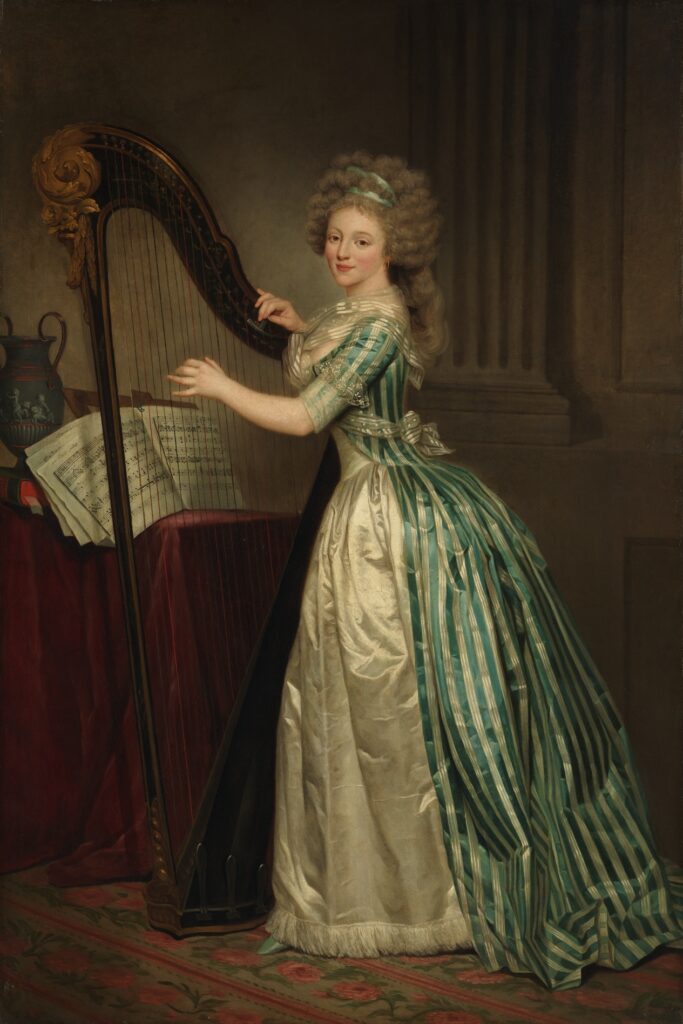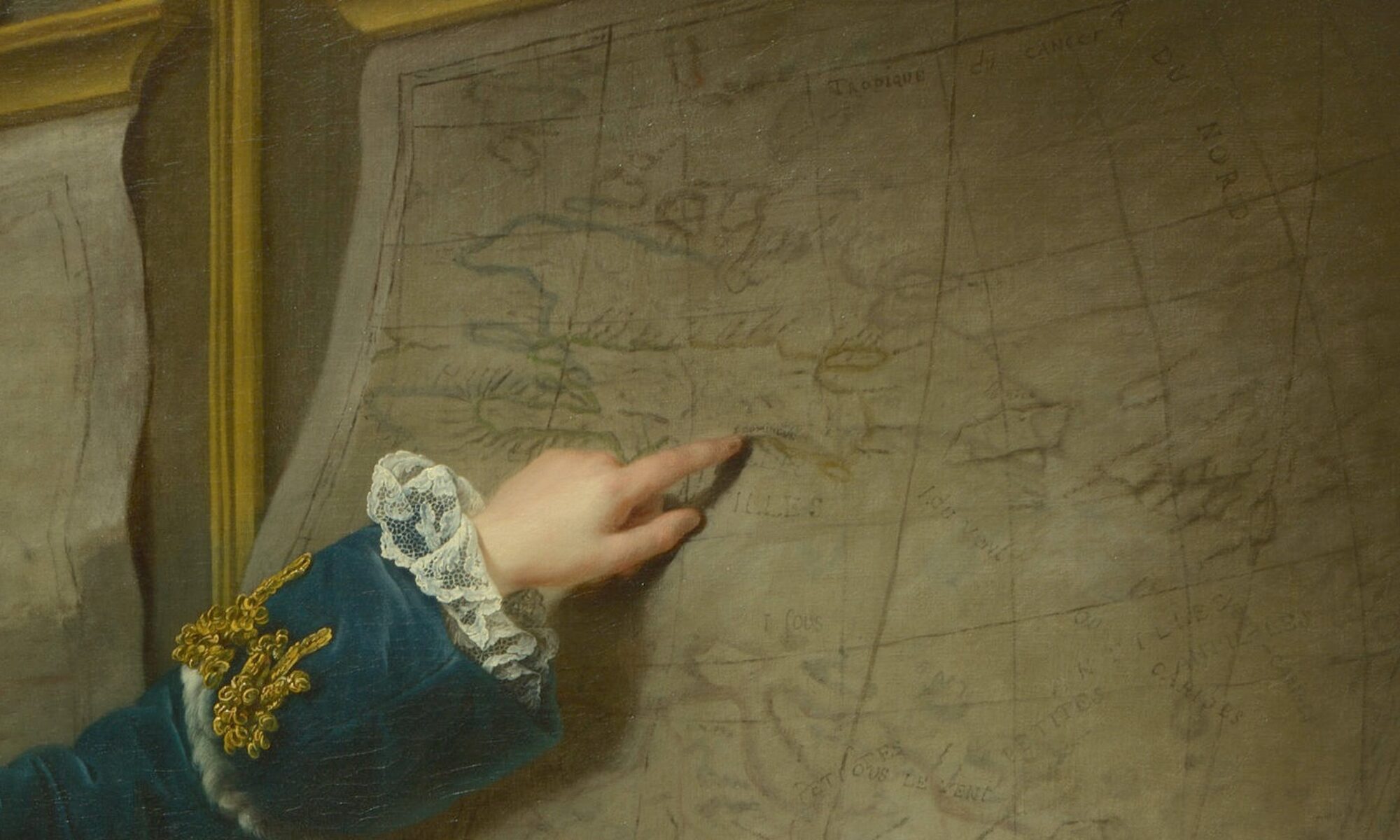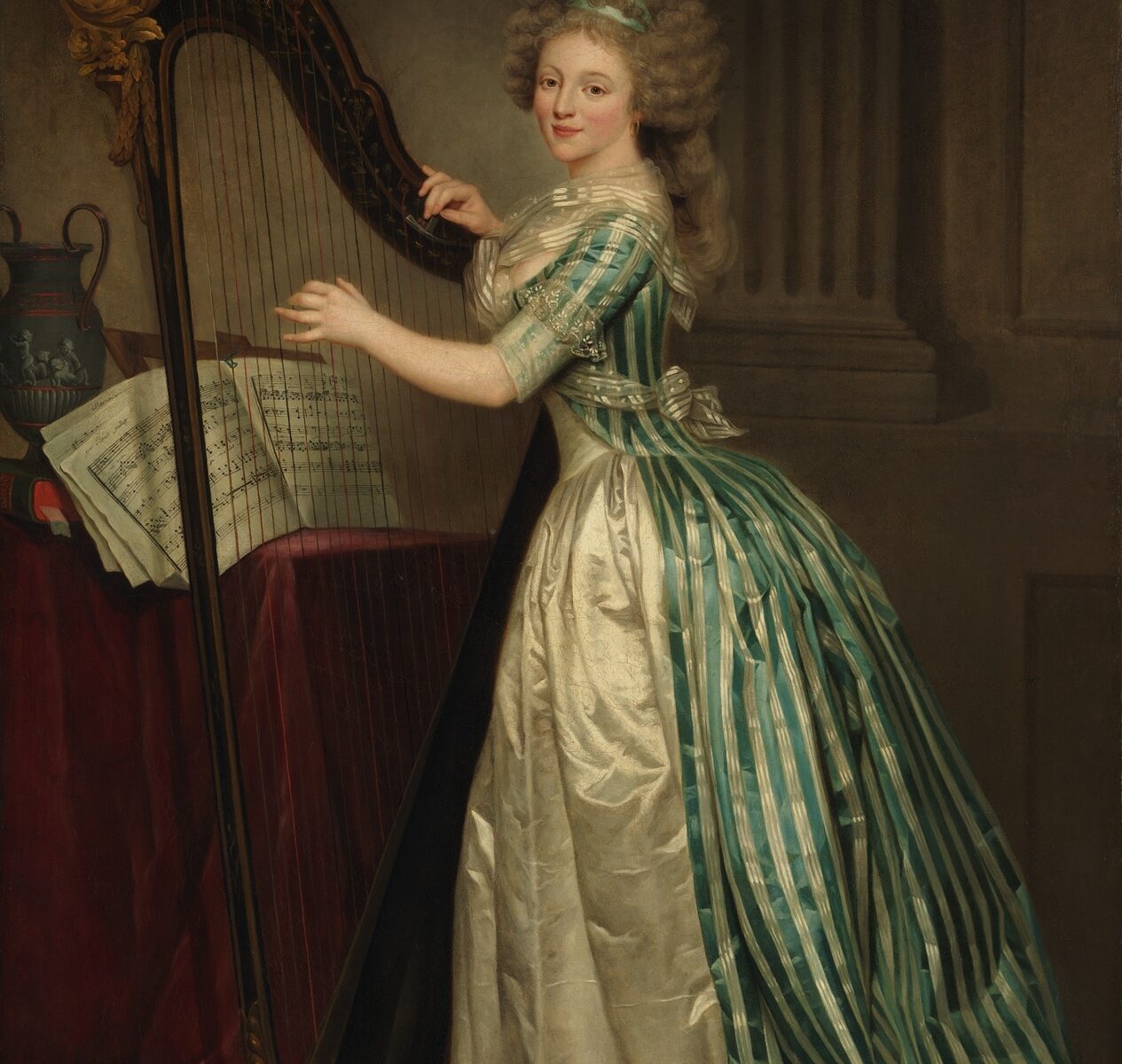David Pullins (Metropolitan Museum of Art, New York)
In June 1802, a well-established Parisian painter, Rose-Adélaïde Ducreux (1761-1802), sketched the disembarkment in Port-au-Prince of the seventy-four-gun Zélé warship that over the past four months had brought her safely from Brest.[1] It was one of forty-five ships that set sail as part of Napoleon’s efforts to quell the uprising led by Toussaint Louverture. On board, on April 1, 1802, Ducreux had married François-Jacques Lequoy de Montgirard, government commissioner and prefect for Saint-Domingue. Upon arrival, a wedding feast was held for them by General Pierre Bénezech attended by members of the colonial administration, including Napoleon’s brother-in-law and head of the fleet, General Charles LeClerc.
Ducreux’s sketch was among the tokens she exchanged with her solicitous relatives in France, notably her adoring father, Marie-Antoinette’s portraitist, Joseph Ducreux. She also sent samples of coffee, sugar, snuff and other Caribbean products, while portrait miniatures of the Ducreux family arrived in Saint-Domingue.[2] This lively trans-Atlantic conversation lasted only a few weeks, however, for by the end of July Rose Ducreux had died of yellow fever, a disease that swept through the fleet upon landing and significantly contributed to Toussaint’s advantage. Their well-attended wedding festivities—already so densely woven into French colonial movement—in fact aided in the disease’s spread, and their host, Bénezech, was among those who quickly succumbed.
It is difficult not to hear a remorseful echo of those celebrations at the end of August, when the newly widowed Montgirard outlined the disadvantages of a proposal to build a public theater in Port-au-Prince. His first concern were recent political events, prompting the question of mixing audiences of different skin tones, but he then pointed to the fact that a warm, heavily populated auditorium in a city with “insalubrious air” was “extremely dangerous to the health of our Europeans and would help prolong or even propagate the cruel scourge that has plagued us for so long.”[3] Public gatherings were, of course, integral to eighteenth-century cultural life in Paris, though whether in France or Saint-Domingue their regulation was always shaped by political stakes and social regulation. For Montgirard these politics were personal, as a letter to him concerning the yellow fever epidemic from the naval commander of the French expedition, Villaret-Joyeuse, acknowledges. In a touching closing from September 12, Villaret-Joyeuse writes, “adieu my friend, may friendship bring some small consolation to your heart.”[4]

Arriving in Port-au-Prince, Rose Ducreux would have rightly considered herself a prominent portraitist of the Salon exhibitions, where she first showed a grand, full-length self-portrait in 1791 (Fig. 1).[5] In an attestation to the Revolutionary government in 1794 appealing to keep shared lodgings in the Louvre, her father had written, “I ask my judges to note the public voice and works that Rose Ducreux has showed at several Salons.”[6] Prior to the Revolution, neither she nor her father could exhibit at the official Salon, for they were not members of the Académie royale de peinture et de sculpture, whose regulations would have been additionally onerous for Rose given the limits set on female membership. Rather, she showed regularly at the Salon de la Correspondence starting in 1786, then consistently at the official Salon from 1791 through 1799.
We can only guess at what compelled Rose Ducreux to leave behind a loving family and successful career. A private passenger on a military ship, perhaps she anticipated the quick solidification of a stable, colonial society in which transplanted Frenchmen and women would commission portraits. Her Self-portrait signals a broader fashionable interest in a world of commodities exchanged globally, but omits obvious references to the Caribbean: the urn resembles Wedgwood sources signaling French Anglomanie of the 1780s, while her striped silk dress originates in the fashion for so-called siamoises, patterns brought from Siam since the seventeenth century. A powerful drawing attributed to Ducreux’s father depicting a Black man, possibly a portrait of Olaudah Equiano, records the family’s intersection with empire and enslavement from Europe, but none of her known works appear to depict persons of color.[7] The distinctly colonial direction taken in Rose Ducreux’s biography coalesces most clearly with her courtship and marriage. An ivory portrait miniature by her father evidently representing her future husband in the early 1790s suggests that their families had known each other for years before.[8] Active in Martinique as early as the seventeenth century, Montgirard’s family held deep connections to French colonialism, and he himself held posts in Dominica, Tobago, Saint Lucy and Guyana before heading to Saint-Domingue. In contrast to this dense professional and family network, colonial France is nowhere obvious in Ducreux’s many surviving paintings or art critics’ reactions to them—though perhaps it need not be and, in fact, the things she sent home in Saint-Domingue are indicative enough. Coffee, sugar and snuff were ephemeral yet everywhere present in her Parisian life. So while nothing so dramatic nor politically entangled as Ducreux’s final year could be predicted by her earlier art or biography, this abrupt lack of transition is perhaps all the more revealing of eighteenth-century Parisian lives and livelihoods, invisible on the surface and yet always already colonial.
[1] Main sources are Georgette Lyon, Joseph Ducreux, premier peintre de Marie-Antoinette, 1735-1802: sa vie, son œuvre (Paris: La Nef de Paris, 1958), esp. 74, 79-80, 111-12; Joseph Baillio, “Une artiste méconnue: Rose Adélaïde Ducreux,” L’Œil, no. 399 (October 1988), 20-27.
[2] Lyon, Joseph Ducreux, 112.
[3] I am very grateful to Meredith Martin for this reference and its connection to Montgirard’s wife. Archives nationales d’outre mer, COL F6 5 No. 149B. Dated 23 fructidor year X (August 30, 1802).
[4] COL F6 No. 5, no. 149A.
[5] Katharine Baetjer, French Paintings in The Metropolitan Museum of Art (New Haven and London: Yale University Press with The Metropolitan Museum of Art, 2019), 350-52 (no. 117). Also see the object file with research by Francesca Whitlam-Cooper and online entry.
[6] Lyon, Joseph Ducreux, 96.
[7] While the attribution of this drawing has remained uncertain, it has strong technical and formal similarities to a Head of a Gentleman (ca.1770-80; National Gallery of Art, Washington, 1991.23.2.a) accepted as the work of Joseph Ducreux.
[8] Sold Paris, Hotel Drouot, Binoche et Giquello, March 30, 2012, Lot 91.
Cite this post as: David Pullins, “Always Already Colonial: Rose Ducreux in Port-au-Prince,” Colonial Networks (April 2025), https://www.colonialnetworks.org/?p=772

